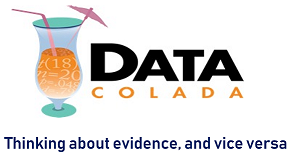Schedule for Fall 2021
| Date | Speaker | Title |
| 10/1/2021 | Alex Rees-Jones (htm) | The Negative Consequences of Loss-Framed Performance Incentives Abstract
 |
| 10/8/2021 | No seminar | |
| 10/15/2021 | Minah Jung (htm) | When Willingness-To-Pay Seems Irrational: The Role of Perceived Market Price Abstract
|
| 10/22/2021 | Abdullah Almaatouq (htm) | In search of synergy in the Task Space using high-throughput experiment design Abstract
 |
| 10/29/2021 | David Broockman (htm) | The Consequences of Partisan Coverage Filtering: A Field Experiment on Fox News Viewers’ Media Diets Abstract
|
| 11/5/2021 | Berkeley Dietvorst (htm) | People Take More Risk When Their Prospects are Tied to Future States of The World Abstract

|
| 11/12/2021 | Ashley Whillans (htm) | Extension request avoidance predicts greater time stress among women Abstract
 |
| 11/19/2021 | Uri Simonsohn (htm) | Interactiongate: Testing and Probing Interactions with Linear Models in the Real (Non-Linear) World is Scandalously Invalid. Abstract
 |
| 11/26/2021 | No seminar | |
| 12/3/2021 | Nina Mazar (htm) | Engaging the middle person: The effect of providing performance feedback to customer representatives on organ donor registrations Abstract
 |
| 12/10/2021 | Silvia Saccardo (htm) | The impact and limits of nudges: evidence from large-scale RCTs Abstract

|
Spring 2021
| Date | Speaker | Title |
| Friday Jan 22 | Jen Dannals | Perceiving Social Norms in Groups. Abstract Social norm perception is ubiquitous in groups and teams, but how individuals approach this process is not well understood. When individuals wish to perceive descriptive social norms in a group or team, whose advice and behavior do they prefer to rely on? Four lab studies and one field study demonstrate that when individuals seek information about a team’s social norms they prefer to receive advice from lower-ranking individuals (Studies 1-4) and give greater weight to the observed behavior of lower-ranking individuals (Study 5). Results from correlation (Study 3) and moderation (Study 4) approaches suggest this preference stems from the assumption that lower-ranking team members are more attentive to and aware of the descriptive social norms of their team. Alternative mechanisms (e.g., perceived similarity to lower-ranking team members, greater honesty of lower-ranking team members) were also examined, but no support for these was found. |
| Friday Jan 29 | No Seminar | |
| Friday Feb 05 | Dorothy Kronick | Do Shifts In Late-Counted Votes Signal Fraud? Evidence From Bolivia (no video, our fault) Abstract
|
| Friday Feb 12 | Gal Zauberman | When is Too Few a Bias? The Impact of Political Ideology on Perceptions of Fairness in Outcomes Abstract
|
| Friday Feb 19 | Quentin André | Can Consumers Learn Price Dispersion? Evidence for Dispersion Spillover Across Categories Abstract
|
| Friday Feb 26 | Liz Tenney | Amplifying Voice in Organizations Abstract
|
| Friday Mar 05 | Keith Chen | Investigating Partisan Cognition and Behavior Using Smartphone Data Abstract
|
| Friday Mar 12 | Leslie John | Joy and Rigor in Behavioral Science Abstract
|
| Friday Mar 19 | Joe Hilgard | Making Science Self-Correcting Abstract
|
| Friday Mar 26 | Geoff Goodwin | People Make Sub-optimal Moral Decisions About Euthanizing Humans As Compared With Animals Abstract
|
| Friday Apr 02 | Abigail Sussman | A Preference for Costly Disclosures Abstract
|
| Friday Apr 09 | Josh Lewis | A New Direction For Anchoring Abstract
|
| Friday Apr 16 | No Seminar | |
| Friday Apr 23 | Leif Nelson | The Value of Replications in the Behavioral and Consumer Sciences Abstract
|
| Friday Apr 30 | Deborah Small | Put Your Mouth Where Your Money Is: A Field Experiment Nudging Consumers To Publicize Their Donations To Charity Abstract
|
| Friday May 07 | Jesse Singal | The Quick Fix: Why Psychology Can't Cure Our Social Ills |
Colada Seminar – Fall 2020
| Date | Speaker | Title |
| Friday Sep 18th | Mike Norton | The Psychology of Ritual Abstract
|
| Friday Sep 25th | Devin Pope |
Unveiling the Law of Demand Using a Large-Scale Natural Field Experiment Perhaps the most fundamental tenet in economics is the Law of Demand. Previous theoretical work and laboratory experiments reveal that even markets populated by irrational (“behavioral”) consumers yield the Law of Demand at the market level. We approach the problem in a fundamentally different manner—rather than showing existence of the Law under varying behavioral assumptions, we embrace a well-known behavioral bias—left-digit bias—to measure its “behavioral contribution” to the Law of Demand. Combining a natural field experiment that included over 21 million Lyft passengers with observational data from over 600 million Lyft rides, we report four key insights. First, the Law of Demand consistently holds in the overall market data. Second, the “behavioral contribution” to the Law of Demand (effects of price changes from $12.00 to $11.99, for example) is responsible for roughly half of the downward slope of the demand curve, even though such changes are only 1/100th of the overall price variation. Third, relative behavioral contributions are similar when estimating cross-price elasticities between Lyft's main products. Fourth, fully accounting |
| Friday Oct 2nd | Jason Dana |
Efficiency Neglect Causes Economic Pessimism Among Americans We find large and persistent errors in cost-of-living perceptions. Subjects believe that a variety of grocery and consumer durable items require increasing amounts of labor to purchase, when in fact they require less. We identify "efficiency neglect" as a cause: People focus on scarcity and neglect their own beliefs about innovation when thinking about the trajectory of cost-of-living. We consider how these beliefs impact attitudes regarding immigration policy. |
| Friday Oct 9th | Maya Bar-Hillel | The False Allure of Fast Lures Abstract
|
| Friday Oct 16th | Alex Todorov | Is The Structure of Social Judgments From Faces Universal? Some Methodological Reflections Abstract
|
| Friday Nov 6th | Rebecca Schaumberg | The Science of the Deal Abstract
|
| Friday Nov 13th | Juliana Schroeder | Demeaning: Dehumanizing Others by Minimizing the Importance of Their Psychological Needs Abstract
|
| Friday Nov 20th | Etan Green |
The Science of the Deal We train an algorithm to bargain optimally in "Best Offer" listings on eBay, as either a buyer or a seller. This talk focuses on the algorithmic seller, which rejects first offers at far higher rates than human sellers—especially when the first offer is generous. Whereas human sellers tend to accept generous first offers, the algorithmic seller rejects them because they signal a willingness to pay more. Human buyers, especially those who make generous first offers, often respond to rejection by paying full price. Human sellers ignore this relationship and leave money on the table. |
Colada Seminar – Fall 2020
| Date | Speaker | Title |
| Friday Apr 24th | Yoel Inbar | Attitudes Towards Genetically Engineered Food and Other Controversial Scientific Technologies Abstract
|
| Friday May 1st | Don Moore |
Unveiling the Law of Demand Using a Large-Scale Natural Field Experiment Overprecision is the excessive faith in the accuracy of one’s judgment. I propose a new theory to explain it. The theory holds that overprecision in judgment results from neglect of all the ways in which one could be wrong. When there are an infinite number of ways to be wrong, it is impossible to consider them all. Overprecision is the result of being wrong and not knowing it. This explanation can account for the persistence of overprecision not only among people but also artificially intelligent agents. I present studies with human participants and with artificially intelligent agents that test some of the theory’s predictions. |
| Friday May 8th | Nina Strohminger |
Efficiency Neglect Causes Economic Pessimism Among Americans While it has long been known that advocating for a cause can alter the advocate’s beliefs, it is often assumed that this bias is controllable. Lawyers, for instance, are taught they can retain unbiased beliefs whilst zealously advocating for their clients, and that they must do so to secure just outcomes. Across several experiments, we show that the biasing effect of advocacy is not controllable, but automatic. Merely incentivizing people to advocate altered a range of beliefs about character, guilt, and punishment. This bias appeared even in beliefs that are highly stable, when people were financially incentivized to form true beliefs, and among professional lawyers, who are trained to prevent advocacy from biasing their judgments. |
| Friday May 15th | Dan Goldstein | The Effect of (Not) Communicating Effect Sizes Abstract
|
| Friday May 23rd | Julia Minson | Conversational Receptiveness: Expressing Engagement with Opposing Views Abstract
|
| Friday May 30th | Tom Meyvis | Consuming Regardless of Preference: Consumers Overestimate the Impact of Liking on Consumption Abstract
|
| Friday June 5th | Katherine B. Coffman | Stereotypes and Belief Updating Abstract
|
| Friday June 26th | Leaf Van Boven |
Party Over Pandemic: Political Partisanship Shapes Public Support for COVID-19 Policy |
| Friday July 10th | Robyn LeBoeuf | Account-Depletion Aversion: People Avoid Spending Accounts Down to Zero Abstract
|
| Friday July 17th | Alice Moon | Overestimating the Valuations and Preferences of Others Abstract People often make judgments about their own and others’ valuations and preferences. Across several studies, we find a robust bias in these judgments such that people overestimate the valuations and preferences of others. This overestimation arises because, when making predictions about others, people rely on their intuitive core representation of the experience (e.g., Is the experience generally positive?) in lieu of a more complex representation that might also include countervailing aspects (e.g., Is any of the experience negative?). This talk establishes the overestimation bias, tests our explanation for why it arises, and explores some interesting consequences and implications. |
| Friday July 24th | Stephanie Tully | APsychological Ownership of (Borrowed) Money Abstract
|
| Friday July 31st | Elisabeth Bik | The Dark Side of Science: Misconduct in Biomedical Research (no video) Abstract
|
